
The Path to ‘Uncharted’ – Gordon Ramsay Seeks Culinary Inspiration in Far Flung Places
In his new series, Gordon explores some of the most remote places on Earth to learn culinary secrets from the locals – with some heart-pumping adventure on the side.
It’s a warm, sunny day on New Zealand’s Stewart Island/Rakiura—the kind of day that lures people to ditch work, pack a picnic, and hit the beach. Hikers wearing shorts crest the grassy hill on the coastline and follow their guide, like ducklings, to the secluded, sandy cove where the calm ocean sparkles and beckons them to shed their boots and feel the soft sand and cool saltwater on their feet.
Shovel in hand, on the hillside above this holiday scene, chef Gordon Ramsay is digging a hāngi pit. The traditional Māori method of cooking food with heated rocks in an earth oven requires him to prepare it all and walk away once his food is buried within, trusting heat and time to do the work. It’s a demand that makes Ramsay uncomfortable, because he can’t constantly check the food, adjusting as necessary. But he’s here to get down and dirty, and even embrace these uncomfortable moments.
“I suppose the more successful I’ve become, the more I want to strip back,” says Ramsay. “I’m always willing to learn; I want to expand on my repertoire. I still need to feel that vulnerability and touch base with that insecurity of what I don’t know.” And right now, broadening his horizons doesn’t involve a luxurious day off at the beach.
He’s here in New Zealand to highlight the influence of Māori tradition and indigenous food on a recent revolution in the country’s cuisine and on local chefs, like Monique Fiso, who are modernizing these traditional foods with fine-dining training. “This stuff deserves to sit on the best tables of the world,” says Ramsay. “I think over the next 15 to 20 years, you’ll see a new breed of chefs at the forefront like Monique, establishing the powerful tastes of one of the smallest countries in the world.”

To get to this day of digging a hāngi pit, Ramsay has spent a week in New Zealand hopping between Stewart Island and the Wanaka region of the country’s South Island, in search of an education while gathering ingredients from the New Zealand’s four main ecosystems: ocean, river, mountains, and forest. While the average Kiwi resident might visit the local market for most of the ingredients that come from the land and sea, Ramsay is going to the source, even when it requires climbing a tree for fuchsia berries, free diving for pāua, wading in a stream to catch an eel with his bare hands, tasting grubs from a rotten tree trunk, or hunting wild goats.
His new National Geographic series, Gordon Ramsay: Uncharted, draws connections between exploration, adventure, and food as Ramsay travels to six destinations: Peru, New Zealand, Morocco, Hawaii, Laos, and Alaska. Rising star chefs in each location (Virgilio Martinez, Monique Fiso, Najat Kaanache, Sheldon Simeon, Joy Ngeuamboupha, and Lionel Uddipa) unlock secrets to the region’s cuisine, and send Gordon on an adventure to learn and discover for himself. When he returns after his accelerated lessons, he puts himself to the test by cooking a feast for local experts, who determine if his education and interpretation of their food culture is sufficient.
This is about putting food back on the map with National Geographic, where it deserves to be.Gordon Ramsay
This may be the first time the US television audience has seen Ramsay outside the kitchen, but it’s hardly his first show about food and adventure. His series, Gordon’s Great Escape, aired on the British Channel 4 in 2010 and 2011, and took a deep dive into the culinary traditions of India, Thailand, Cambodia, Malaysia, and Vietnam. His 2011 special, Gordon Ramsay: Shark Bait, investigated the history, culture, and controversy surrounding the shark fishing industry.
It’s different than the Ramsay persona that the television audience in the U.S. is used to seeing, far from the fiery temper and expletive-peppered commentary. Ramsay’s focus on going deeper and beyond with food casts him in the student role in the Uncharted series. “This is about putting food back on the map with National Geographic, where it deserves to be,” he says. “It’s the planet Earth of food that gives inspiration for your next trip.”
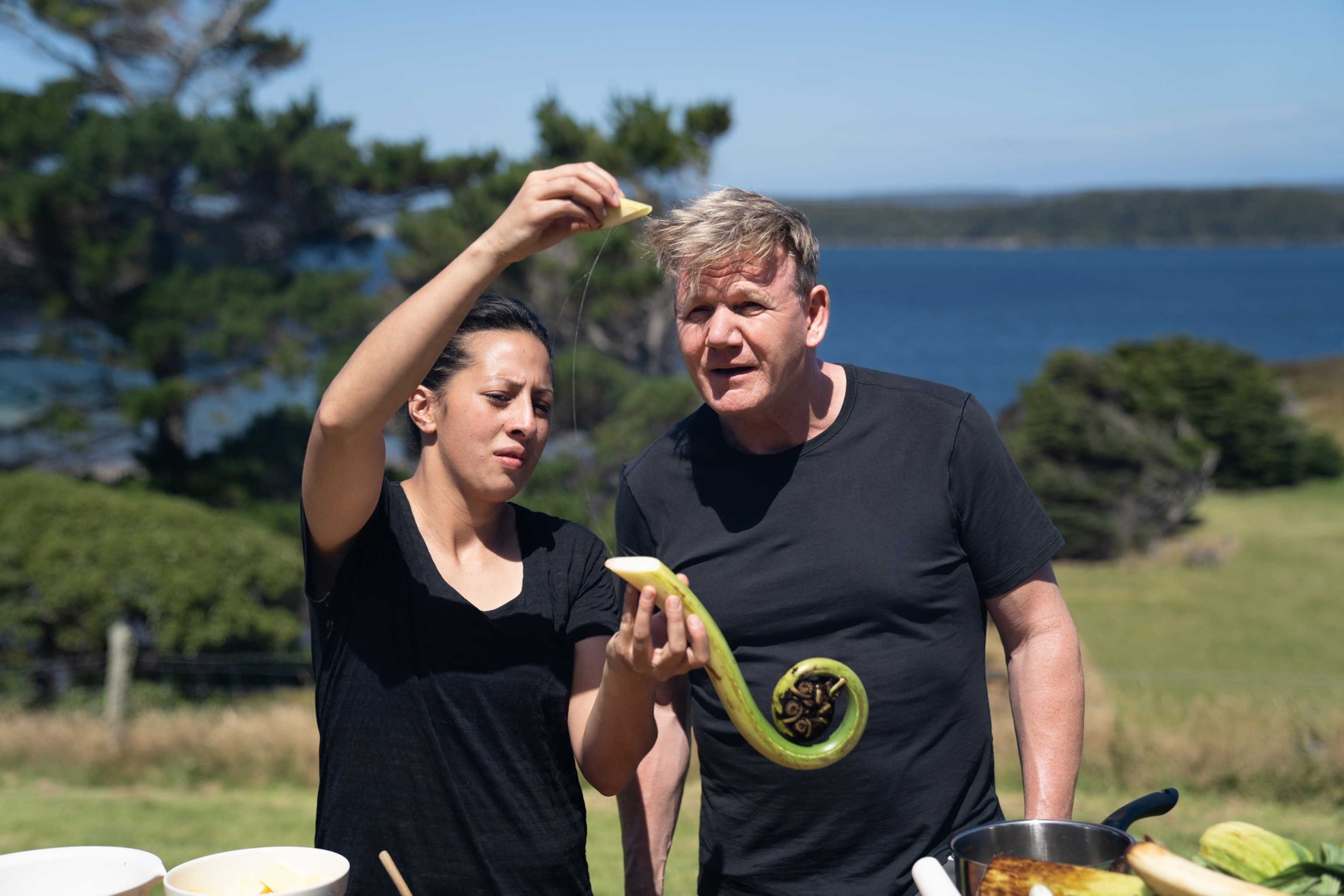
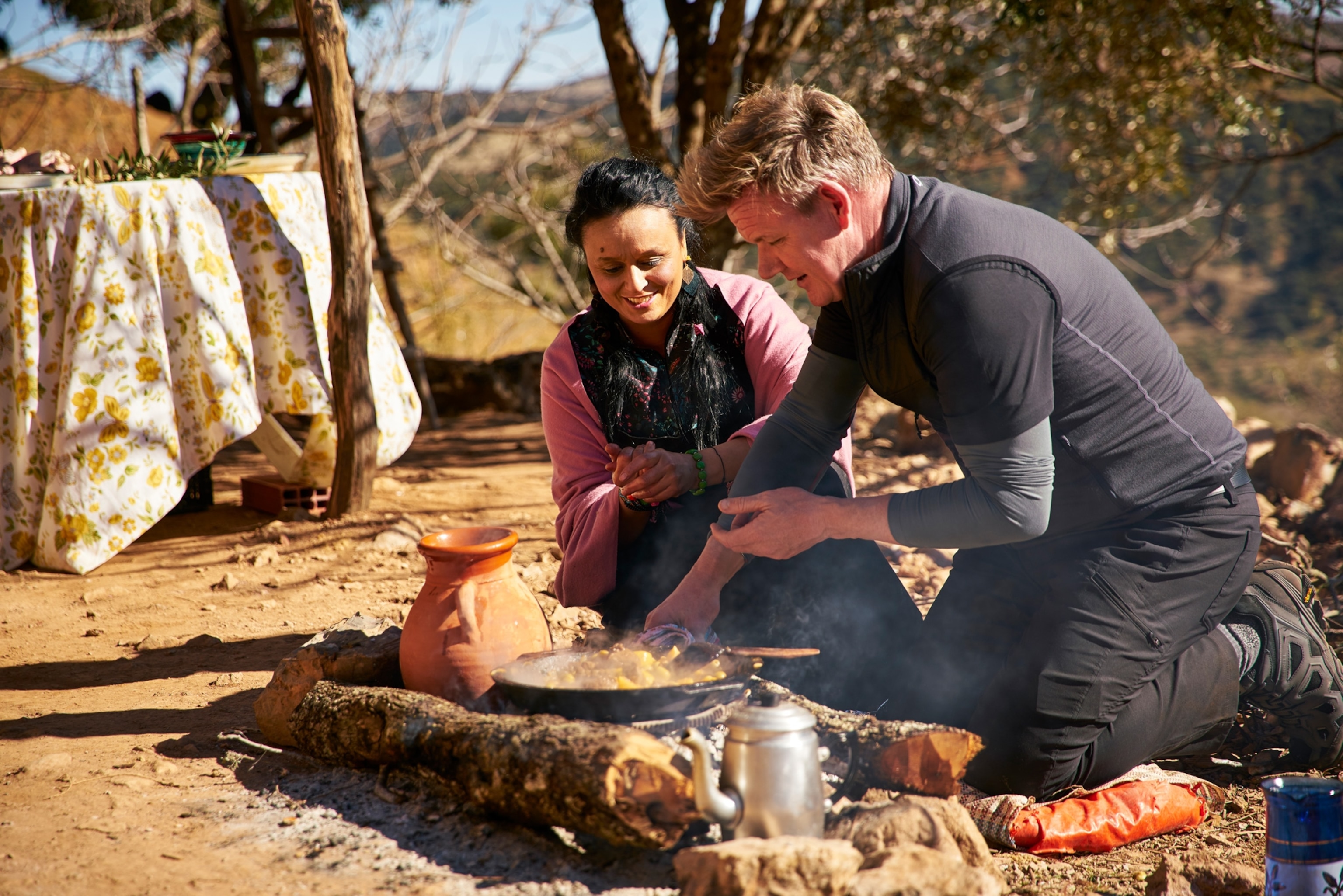
While Ramsay is the central figure the audience follows through the series to get a closer look at six different cultures around the world, his assignment comes from the local chef, who also chooses the people who will ultimately determine whether Ramsay succeeded in getting a sense of the cuisine. All of these people hail from the region and Ramsay values their judgment of local food.
In Morocco, Ramsay works with chef Najat Kaanache, who’s changing the face of her country’s cuisine at her restaurant, Nur. In Hawaii, it’s chef Sheldon Simeon, who takes a modern spin on classic Hawaiian dishes at his two restaurants: Lineage and Tin Roof. Laos’ chef Joy Ngeuamboupha focuses on celebrating the country’s culinary heritage at one of the top-rated restaurants in the country, Tamarind Restaurant and Cooking School.
“I want the series to reinstate the importance of keeping it local and in season, and drawing out some of the best-kept secrets that these chefs and local source experts have kept up their sleeves,” says Ramsay. “We’ve gone to six places and gotten something incredibly special from each and every one of them. It makes the experience a little deeper than checklist travel.”
A former footballer, Ramsay is no stranger to marathons, triathlons, and even greater adventures around the world. For him, the adventure is part of what’s necessary to get close to the source and understand the culture—even when he’s kayaking through rapids in Laos to get to a remote village, rappelling alongside a waterfall in Morocco to meet up with some secretive local mushroom hunters, dangling on the edge of a cliff in Peru to harvest a plant for insect larvae, spearfishing in Maui, or climbing a 60-foot Alaskan rock pillar to make tea from old man’s beard.
“For me, this journey is all about food and discovering what really lies behind a destination,” Ramsay says. “It’s about the search into getting deeper and uncharted, and becoming adventurous with your attitude about what’s happening locally. It makes you understand the destination so much more.”
Not all adventures are easy, and even with the desire to go after some of the ingredients covered in the series, some of Ramsay’s attempts were a little on the edge of his comfort level. “Climbing Chimney Rock in Alaska was so awkward and hard to do,” he says. “When I got incredibly tired and my arms were absolutely killing me, I thought ‘I’m taking on too much here.’ I dug into the rock and grabbed onto a branch, and within seconds, the whole thing just crumbled and I fell backward.” Luckily for him, he was able to regroup and eventually climb the rock to gather the lichen he needed to make tea.
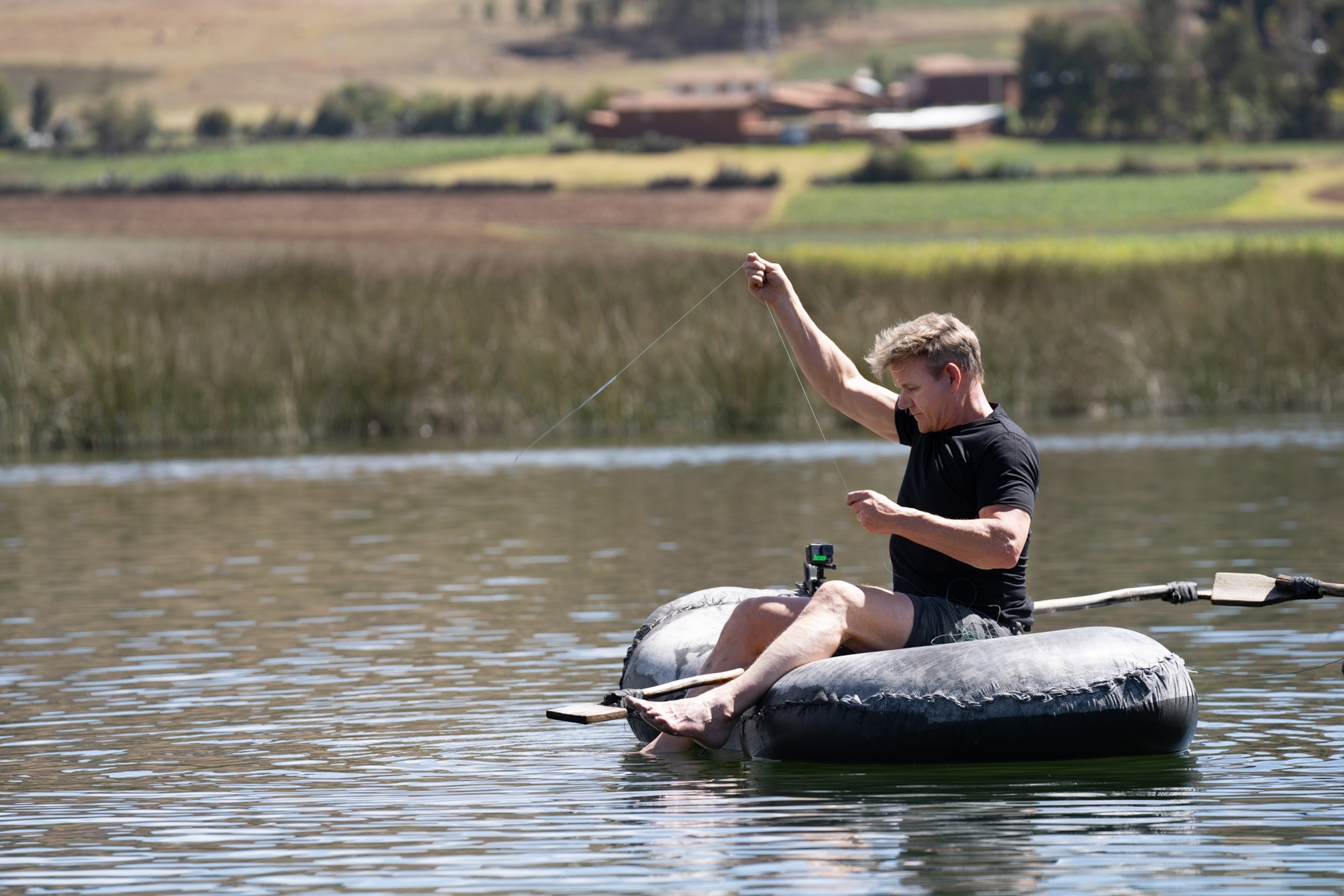
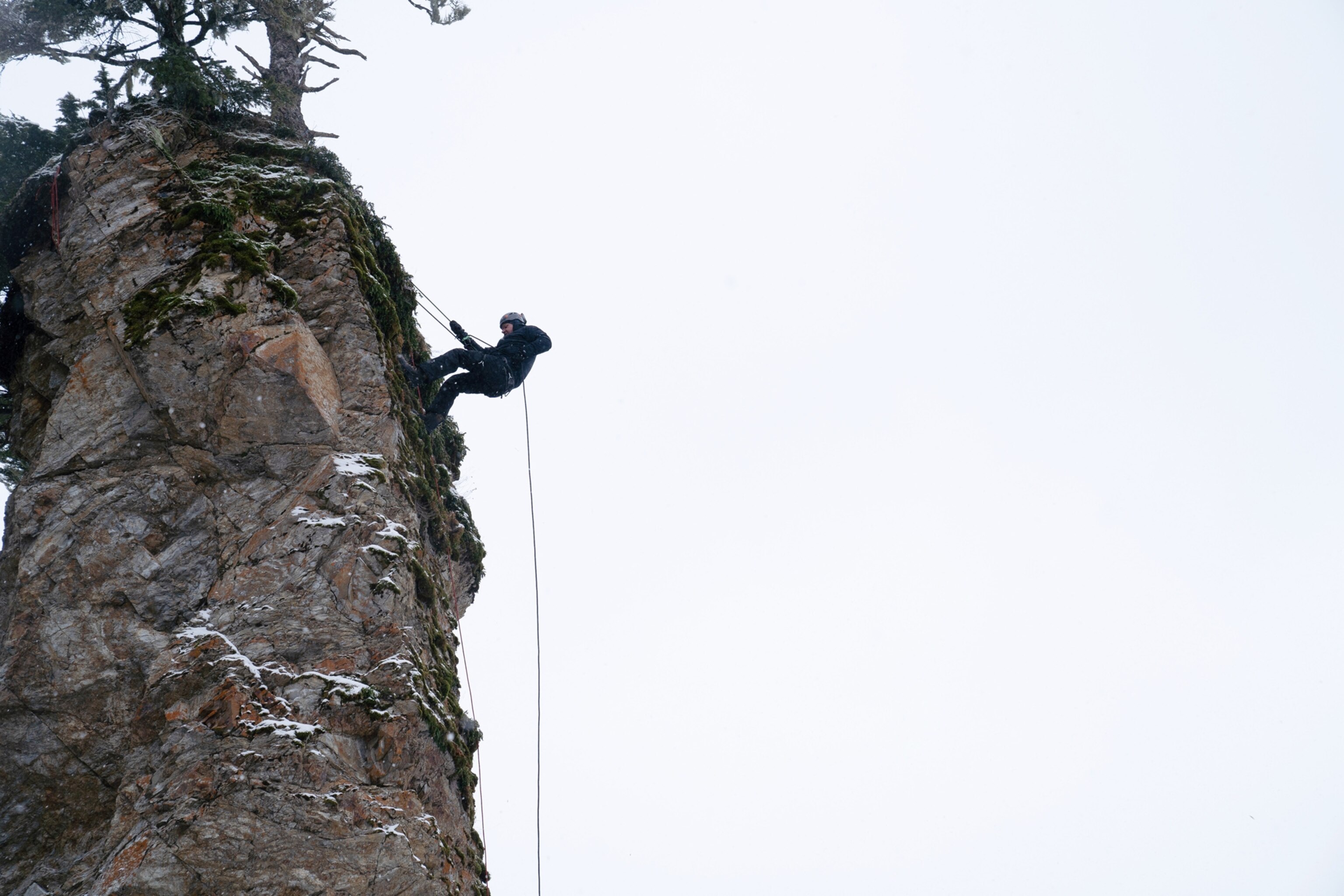
With his respect for local cultures and cuisines, in Uncharted, Ramsay has to put himself in the back seat and let the experts of each destination drive. It’s one thing to visit restaurants serving the cuisine of the region, but to get the greater understanding of the ingredients and the people who rely on them, it’s essential to be part of the gathering process. In Alaska’s Tlingit community, the fleeting summer season is when most foraging is done, and the resulting treasure is what’s used throughout the winter. “If people could only spend time among the food here, both foraged and hunted, they’d realize that there is no choice—that it’s about survival,” he says. “It’s a crucial life lesson more than social media and a glamorous lifestyle can teach.”
“He came at a cool time of year,” says chef Lionel Uddipa, an Alaskan third-generation chef who’s the executive chef at Salt Restaurant in Juneau, and one of a new wave of chefs who are redefining Alaskan cuisine. “The winter shows what Alaskans are made of. You’ve got to be tough and have thick skin. It’s almost like an old pioneer way of living.”
In the discovery process, challenges are as much a part of the adventure as successes. Wildlife doesn’t operate on a timetable. Remoteness and precarious locations are often part of the foraging and hunting equation. Weather doesn’t always cooperate. There are only so many hours of daylight. For each destination’s experts, who rely on these ingredients, the challenges have made them more knowledgeable about the most trusted methods and times to obtain them. Ramsay is discovering these details in the shortened span of a week, instead of a lifetime.
In some cases, these challenges resulted in missing out on getting the ingredients that Ramsay wanted, forcing him to pivot and change his expectations and forge a new path. “Not getting the ingredients is not failing, it’s nature,” Ramsay says. “Even if I wasn’t going to be successful in obtaining an ingredient, I still want to have a bloody good go at it. The diving scene in the Mekong, to the naked eye it doesn’t look very fast. I’m a powerful swimmer and have completed the Kona Ironman. But to go in that current and try to maintain a position without falling backwards for 30 seconds, I was gassed.”
But for every challenge, there are greater moments of achievement, even when the pursuit hasn’t been easy. After initially having difficulty harvesting New Zealand pāua among thick kelp, by keeping in control in a strong sea surge, watching out for sharks, and holding his breath underwater, Ramsay came away from the dive with a number of pāua, as well as sea urchins.
“It brings back memories of being a 22-year-old in Paris, and my first job before 9 a.m. was to open three boxes of sea urchins,” Ramsay says. “They were tiny, and the ones here are the size of a rugby ball. Zane just cracked one open, cleaning it in the sea, and it’s creamy, salty, delicious—a delicacy beyond belief.”
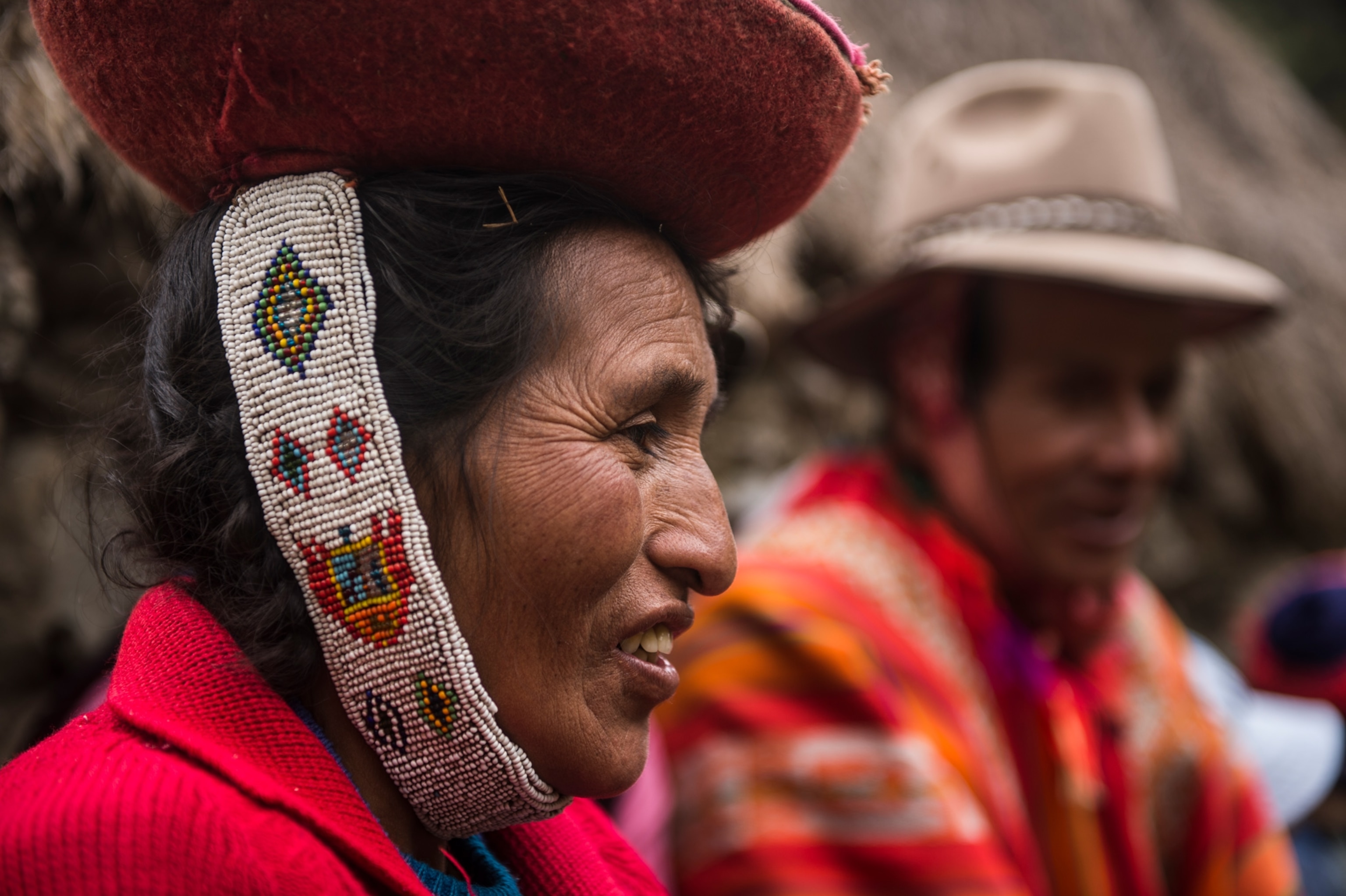

The connection with local experts in all six of the Uncharted destinations is key. “The Andean region in Peru is quite biodiverse, but the real story about sourcing ingredients here is more about respect of the traditions and connecting with the local growers or foragers to get food closer to the source,” says chef Virgilio Martinez, whose restaurant in the Sacred Valley, Mil, is part restaurant focused on ancestral cuisines and part culinary research laboratory. Just ducking into a restaurant may result in an incredible meal, but the immersion of it all is what makes it a rich experience.
In Peru, Ramsay visited a family and assisted them in their kitchen—cooking a meal on a small, but powerful, stove fueled by cow manure and with a metal tube for blowing oxygen to turn the heat up, all while cuy (guinea pigs) were running around his feet. “That experience, plus using the grinding stone, was as far as it gets from our modern cooking items you can get from a Williams Sonoma catalog, and yet there are moments for me that I’ll never ever forget,” he says.
At the end of each Uncharted episode is the Big Cook, where Ramsay measures his week of immersive education in the region’s cuisine. The guests at each Big Cook judge whether Ramsay learned well enough, because they’re experts in the cuisine of their culture. And Ramsay pushes himself not only to understand traditions and new ingredients, but also to present those ingredients in a different way, and maybe impress the experts, too.
“We compete with ourselves in wanting to do well with the ingredients we have,” says Martinez. “Competition is good sometimes. I wanted him to learn, but also enjoy and have fun with food.”
And while each Big Cook has the chefs working quickly to assemble a menu packed with meaning, it’s still an opportunity for fun, where colleagues can help each other, make jokes, and engage in a little friendly competition. “I think my favorite moment was the filming of the Big Cook,” says chef Monique Fiso, who has had a leading role in elevating Māori cuisine in New Zealand through her restaurant, Hiakai. “I was expecting this segment to be stressful and, to be honest, not that much fun to film due to the large amount of shots we needed to get through in a day, but it turned out to be the complete opposite—plus Gordon was a lot of fun to work with.”
It’s always a good feeling when someone tells you that you got it right, but education is also valid when you get it wrong. “One thing the farmers in Peru didn’t like was the alpaca heart” says Ramsay. “They wanted it more cooked. How cool is that: farmers coming out of the mountains and telling me that the heart is so raw that they can still feel it beating in their mouths? There are several more of those moments in Uncharted. It’s nice to get up to speed, but you can’t always get it right. That wasn’t about me showing a young chef how good I am; it’s me learning through the eyes of a young chef locally. I’m back on the floor and back on the line.”
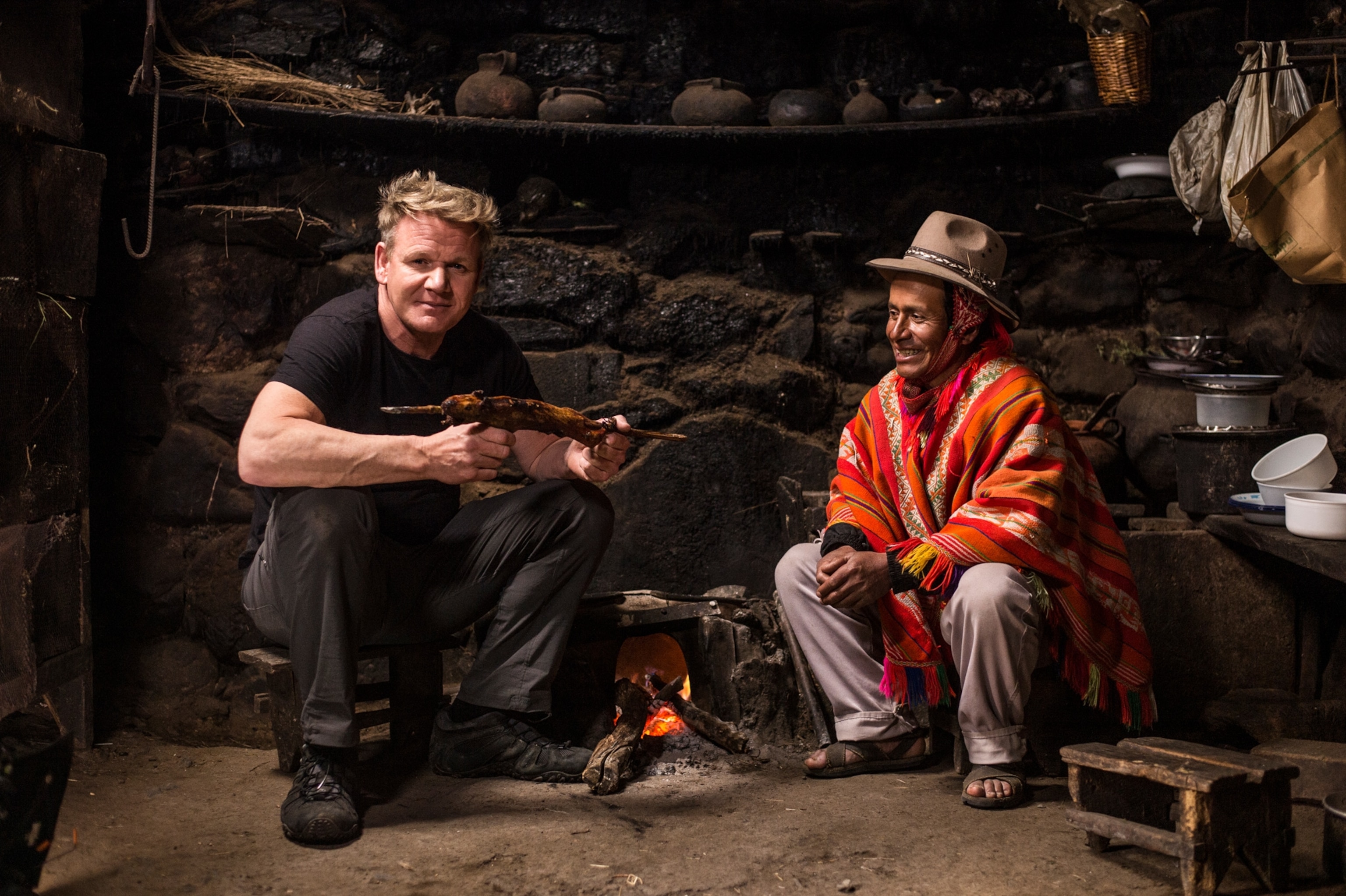
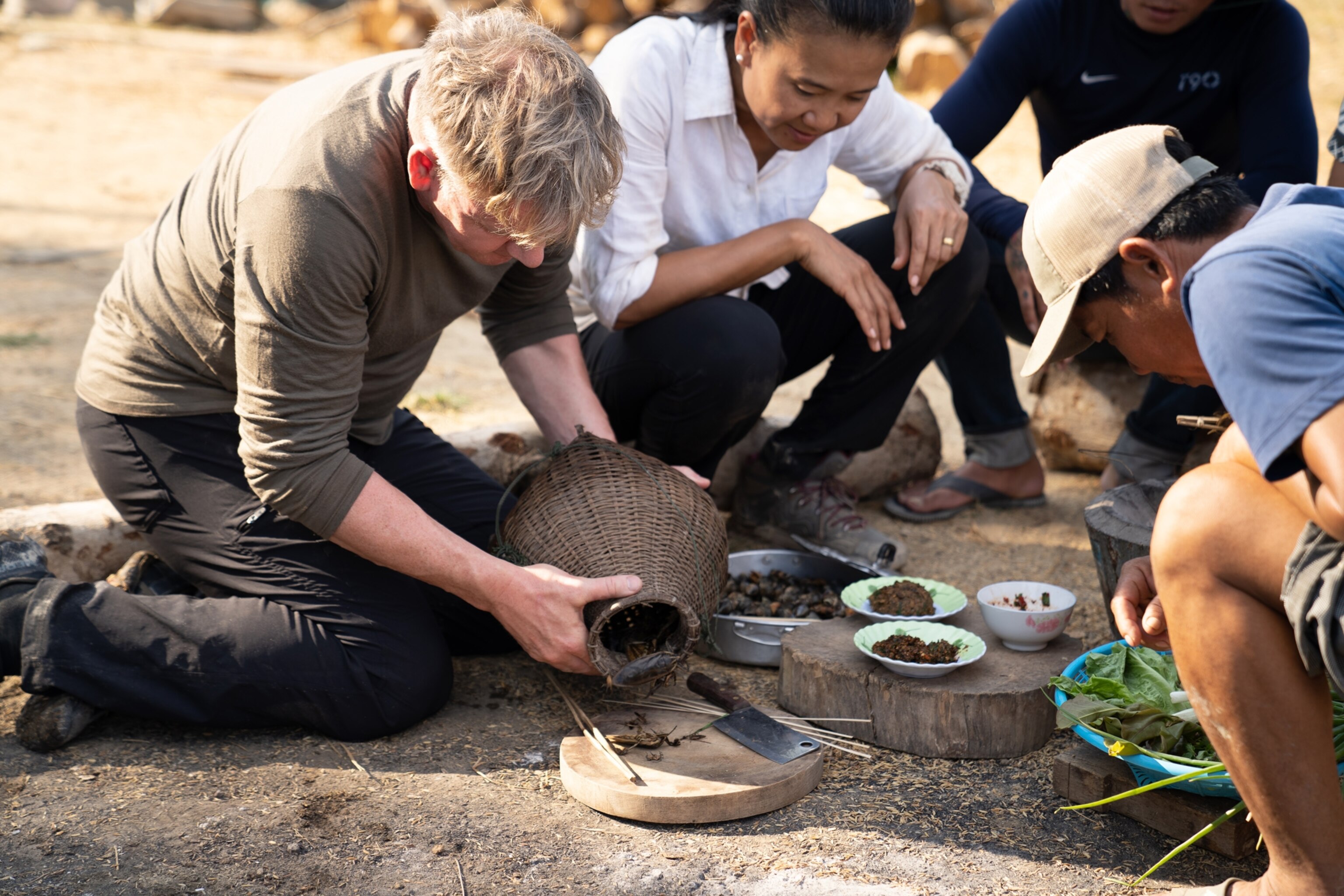
Like the farmers in Peru, guests at each Big Cook weren’t shy about telling Ramsay their thoughts about the dishes, and in some cases, they were surprised they liked some of his additions that were influenced by a very different culture, yet with the elements obtained nearby. In Maui, shocked that they enjoyed something as different as a shepherd’s pie-style dish made with local venison, guests discovered how positive a nontraditional use of their ingredients could be.
While Uncharted illustrates food cultures from around the world, Ramsay has deeper goals for the show. “I’d like people to get a sense of adventure on their doorstep,” he says. “It takes me back to the beginning of my journey. I was insecure when I started cooking because it was a canvas of magnitude on which I never thought I could perform. My first pair of chef whites and my knife were bought by a charity to get me to college. That forced me to strive to learn quicker, to feel better and more confident. It’s very rare that I get to go back to reconnect with that experience—the depth and the soul-searching vulnerability.”
There’s no doubt that throwing himself into the Mekong River to catch snails in Laos, harvesting taro from a field in Maui, or trading heart of palm for honey with a grandmother in Morocco has made Ramsay wide open to experiencing the essence of each culture. For him, that’s all part of his long-term view on life and his career.
“I want to expand on my repertoire,” says Ramsay. “It’s never a one-pot wonder where I won’t change it again. For me, it’s like a culinary jigsaw puzzle and there are 2,500 pieces. When you get to those last 10 pieces and you complete that beautiful picture, you scrap it and start piecing it back together again.”